Last week I spent 3 transformative days in Mexico City attending Flower House Mexico (FHM)—a unique event blending floral design, community, and philanthropy. The workshop’s mission? Raising funds for the National Cancer Institute in Mexico City, supporting life-saving equipment, treatment and research.
What is Flower House Mexico?
Founded by cancer survivor Pili Fuentes and supported by a team of flower loving women, FHM unites international floral designers and students for a hands-on workshop in a stunning historic venue. This it’s 4th year, the workshop was held in the inner city suburb of Cuauhtémoc-Juárez. Previously FHM was held in the beautiful artisan cities of Oaxaca and Pueblo. With an entry fee of $3,500 USD, students receive expert training while contributing to a cause that truly matters. This year’s event celebrated the “…the use of flowers as a vessel for change”.
The workshop spanned three inspiring days, where floral designers shared their knowledge while participants honed their skills through individual and team-based projects. However, FHM wasn’t just about artistry—it was about the profound connections formed between individuals driven by a shared passion and purpose. It was also a chance to immerse ourselves in the cultural richness of Mexico City.
Interspersed over the workshop, were 3 demonstrations by Rachael Lunghi of Siren Floral Co who created 2 bouquets, a vase arrangement and 2 tablescapes. Jason Murakawa of Small Masterpiece, owner of a high-end plate and table setting rental company based in New York and Los Angeles, entertained us by explaining how his company came about and and how his white glove service operates. Steve Nielsen a professional makeup artist created the makeup and hair for 2 models, who modelled wearable florals created by Sue McLeary and a bouquet by Rachael. The entire event was professionally photographed by wedding photographer master Corbin Gurkin.
The workshop was supported by a team of carpenters and electricians who provided scaffolding and assisted with structural supports and lighting to the installations. Catering provided delicious Mexican lunches and afternoon tea, included churros! And the workshop would not have gone ahead without some 20 volunteers (professional florists in their own right) who shopped, conditioned, created and tidied up, prior, during and following the work shop. Thank you to all of you.
Meet the Designers
This year’s lineup featured five floral designers:
Susan McLeary (Passionflower Sue), Michigan, USA
Maxine Owens, Max Owens Designs, Dallas, USA
Liz Griffith, Siloh Floral, US/Europe
Jisook Yim, Saison Fleurie, Korea
Frida Kim, contemporary artist from Seoul, based in London
Each designer brought their unique style and perspective, from elegant hanging to avant-garde floor installations. I had the privilege of working with Frida Kim, whose contemporary vision and cultural insight pushed me to see floral art in a whole new way.
Day One: Corn as Art
Our journey began with an unexpected yet iconic material—corn - fresh, dried, husked, red, yellow, white and black. Frida’s approach transformed a simple botanic material ‘corn’ into a profound expression of emotion and meaning.
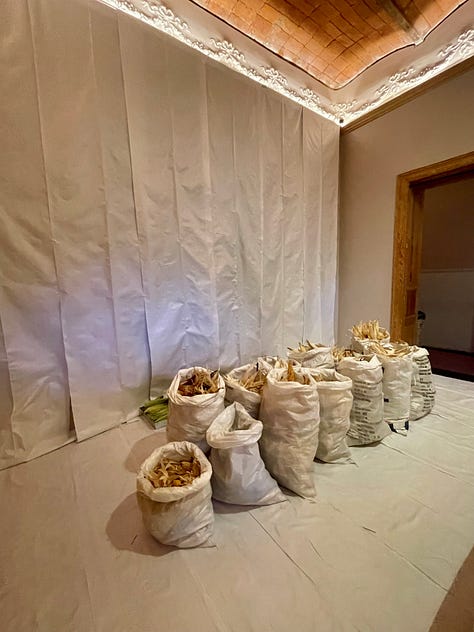
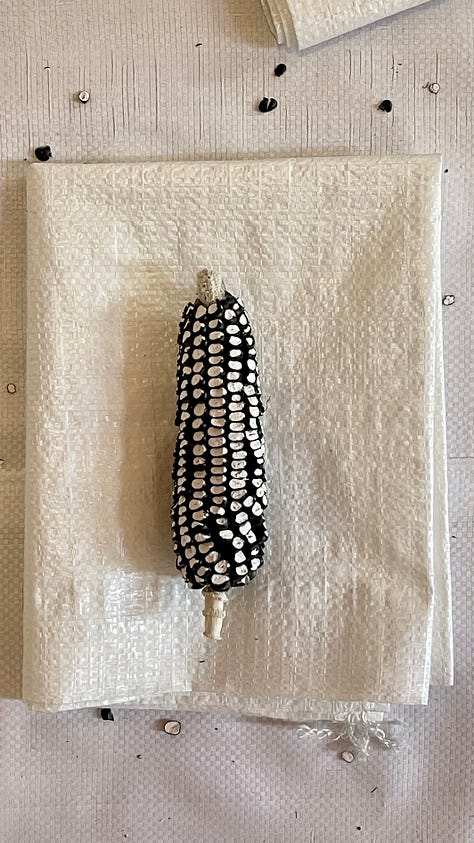
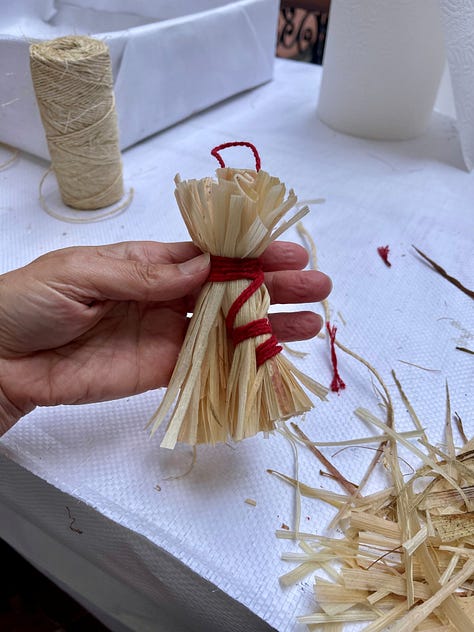



As a staple of Mexican life and culture, corn became the medium for our creative exploration. We focussed on a singular corn cob, then we had the opportunity to create our own individual corn creations. We each explained our creations before Frida provided constructive feedback.
Fridas selection of corn as the core ingredient to the workshop emphasized how maize symbolizes resilience, sustenance, and cultural identity—a perfect metaphor for the workshop’s mission of creativity and impact. Working with corn reminded us of the importance of grounding our art in local traditions and resources, creating designs that honour the place and people around us. We explored techniques such as weaving husks into sculptures, layering and stripping husks to make traditional cleaning brushes, and threading and arranging stalks to create stunning structural elements.
Day Two: Collaborative Installations
Day two brought teamwork and innovation. Divided into 2 groups, we collaborated on 2 medium-scale installations which mirrored each other. One team (mine) used dried husks and the other fresh husks. As with normal real life floristry situations we had restrictions. In this situation we had to avoid contact with the walls and minimal use of support structures. We couldn’t hang anything from the ceiling because of the historic scalloped brick design of the ceiling and it’s decorative cornice. This required out-of-the-box thinking and a deep understanding of structural design.
The group installation commenced on day 2 and after much guidance from Frida, 5 corn towers ranging up to two metres in height were created. The corn was tied to triangular shaped frames. The colour selection, shape and direction of the corn was inspired by the corn god Centeol. These elements combined to create an installation that felt both modern and deeply connected to the Mexican heritage.
One of the most moving moments was pausing to reflect on the deeper significance of maize. For many of us, it was the first time we had truly understood its cultural importance:
“Corn is more than a crop—it’s a symbol of life, resilience, and the interconnectedness of humanity and nature.”
Frida blessed the structures upon their completion by burning herbs for positive energy. As we worked together, the installations became a testament to the power of collaboration, blending artistic visions into cohesive, meaningful works of art.
Day Three: Final Flourishes and Fiesta
The final day was a culmination of everything we had learned and created. We added the finishing touches to our installations, transforming the space into a vibrant celebration of floral artistry. The volunteers cleaned up the rooms, ready for the final presentation. The rooms came alive with colour, texture, and emotion, each design telling its own story. Giant red and white pinatas and florals lined the entry hall of the building and long strings of amaranthus line the stair well.
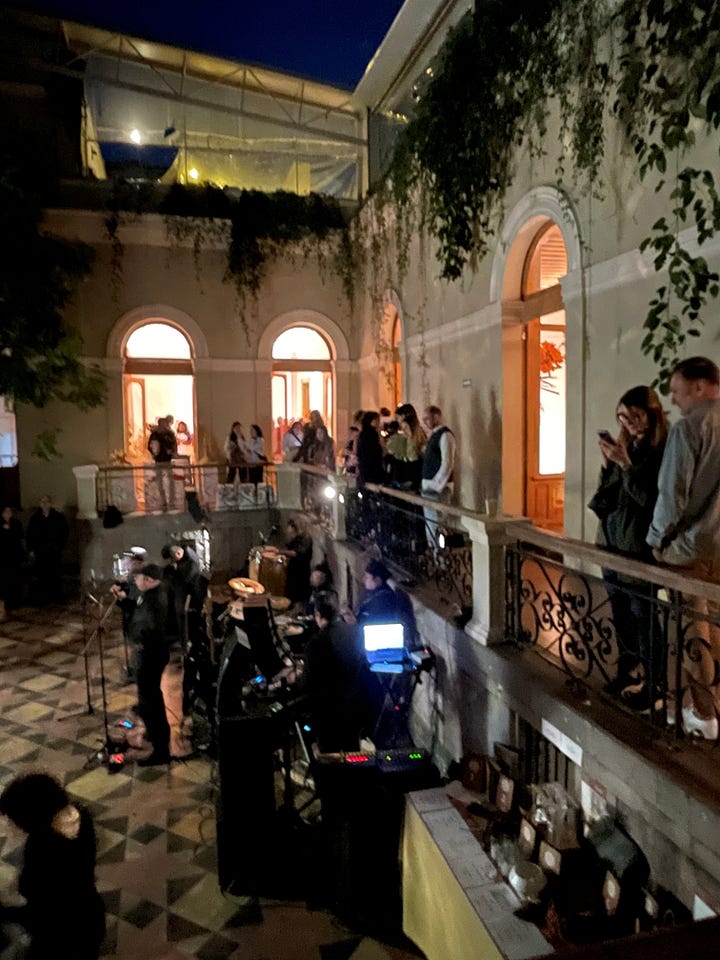
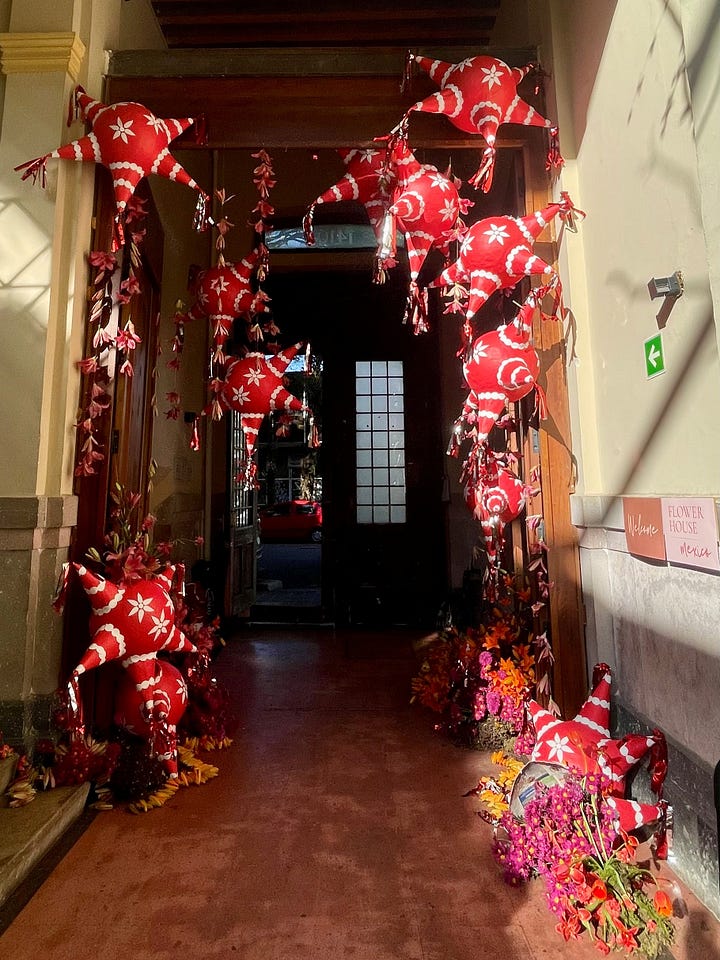
Sustainability was a key focus. Following the fiesta all corn materials were to be donated for reuse and the discarded flowers were to be recycled. Any leftover flowers were put in a bucket out on the footpath of the building and offered to passers by for free.
The evening ended with a lively fiesta. The air buzzed with music and laughter as we enjoyed traditional Mexican food, dancing, and a heartfelt raffle to raise additional funds. Local musicians performed, adding to the festive atmosphere. This celebration was not just a party—it was a moment to honour our shared achievements, the connections we had formed, and the cause that had brought us all together. I purchased a number of raffle tickets, hoping to win either sessions with one of the floral designers or better still a scholarship to return to FHM 2026. However sadly, I didn’t win. Hopefully I may be able to return next year, perhaps as a volunteer.
Other Installations
Of course, during the 3 days the other floral designers, their teams of helpers and their students carried out their own tuition, own personal creations and group installations. Susan McLeary created a hanging installation against the wall with hanging complete hydrangea plants, heleconias, white Lilies, coconuts and chrysanthemums, threaded tomatillos, and giant hanging agaves leaves. Standing floral dividers created a meandering path to the vertical installation.
Maxine and Liz’s team created a palette of orange, purple bougainvillea and chrysanthemums. Terracotta pots spilling out chrysanthemums and lilies, suspended palm leaves and inflorescence pods, and hanging orange slices.
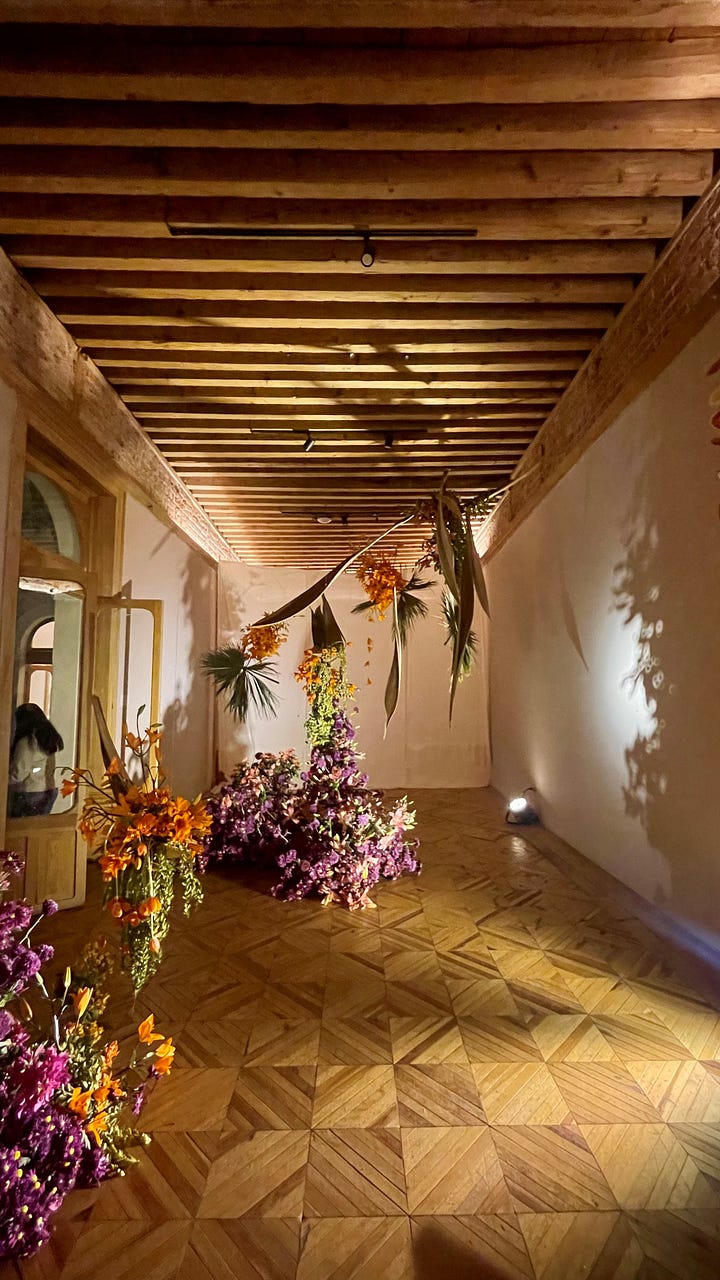

Jisooks floating design featured fine draped strips of tinted cloth accented by towers or flowers and threaded blossoms with water tubes.


The Transformative Power of Giving Back
Reflecting on my time at FHM, I am filled with gratitude. To the designers, volunteers, and the incredible women behind FHM: thank you for fostering a space where artistry and purpose intertwine. This workshop was more than an event—it was a testament to how beauty can create change.
The impact of FHM extends far beyond its participants. The funds raised are going to the National Cancer Institute to support vital cancer research, treatment and medical equipment. Being part of this initiative reminded me of the profound power of community and creativity to make a difference.
If you’re curious, visit FHM on Instagram (@flowerhousemexico) or their website www.flowerhousemexico.com for more information. I highly recommend following this inspiring community. Whether as a participant, donor, or supporter, you too, can make an impact through creativity and compassion.


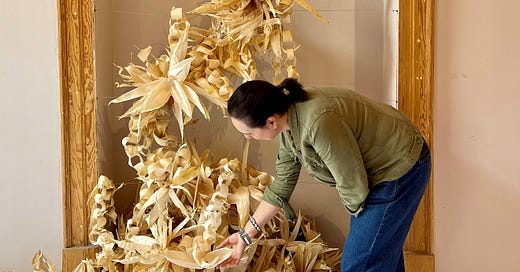




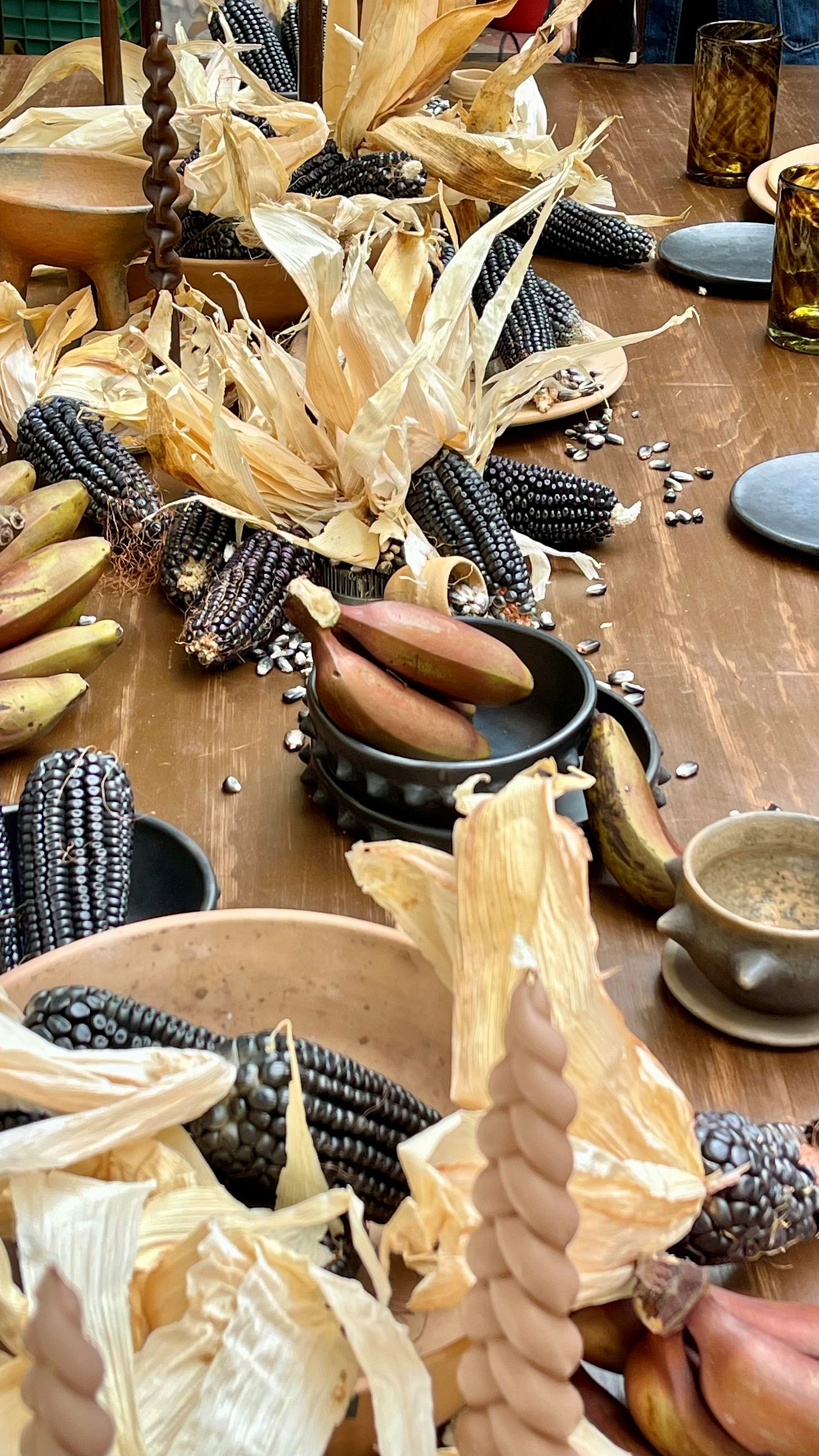
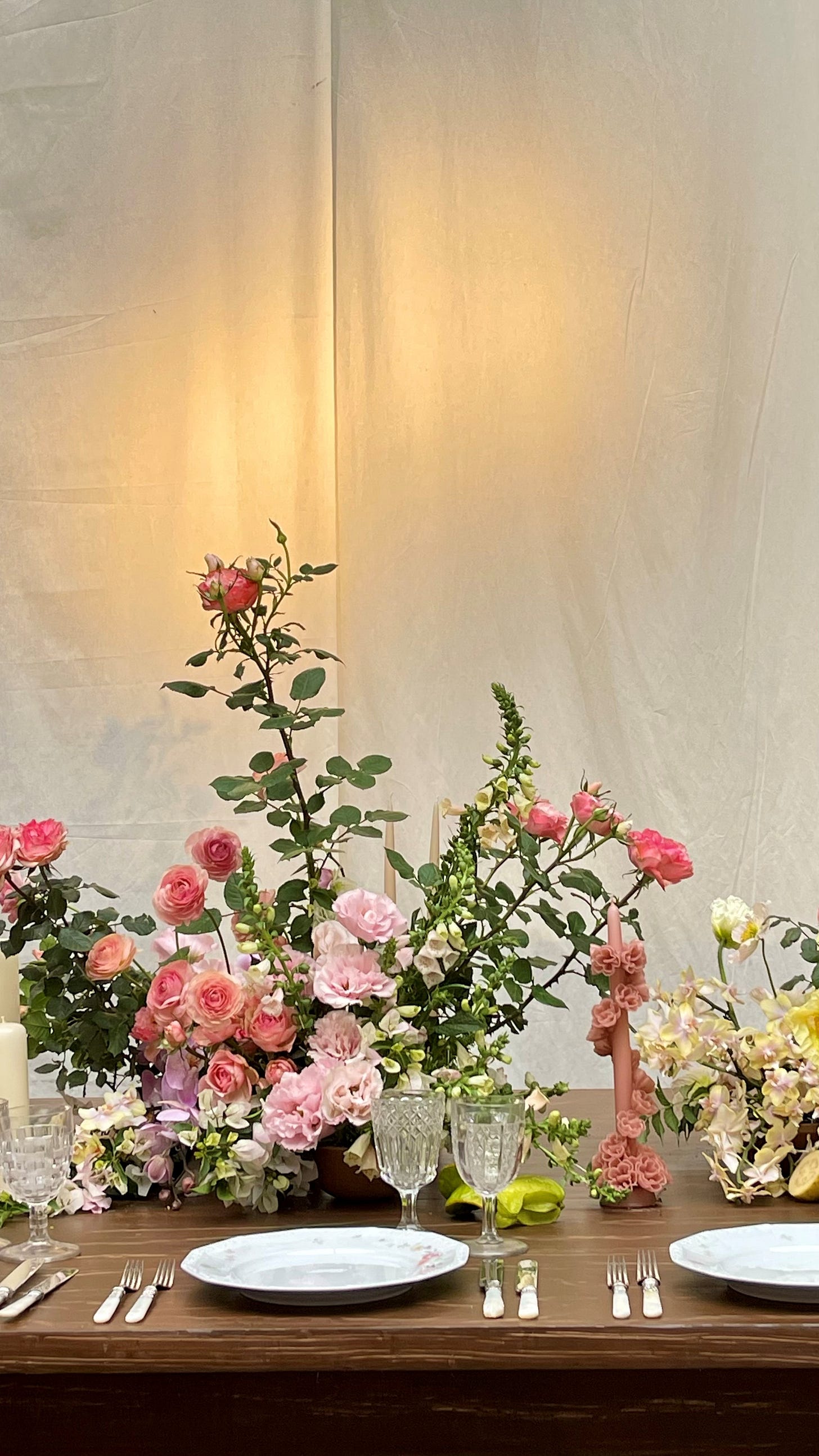

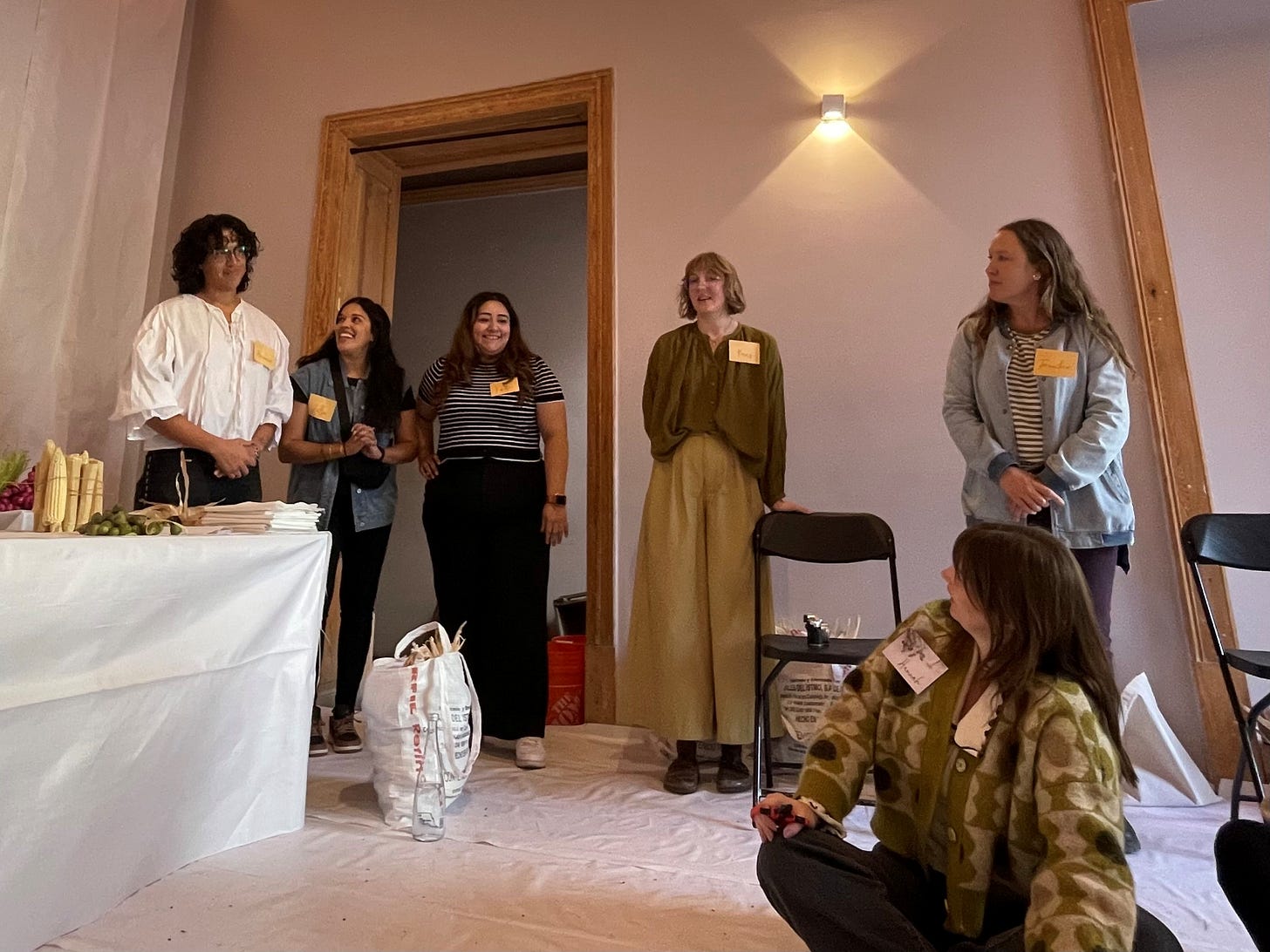


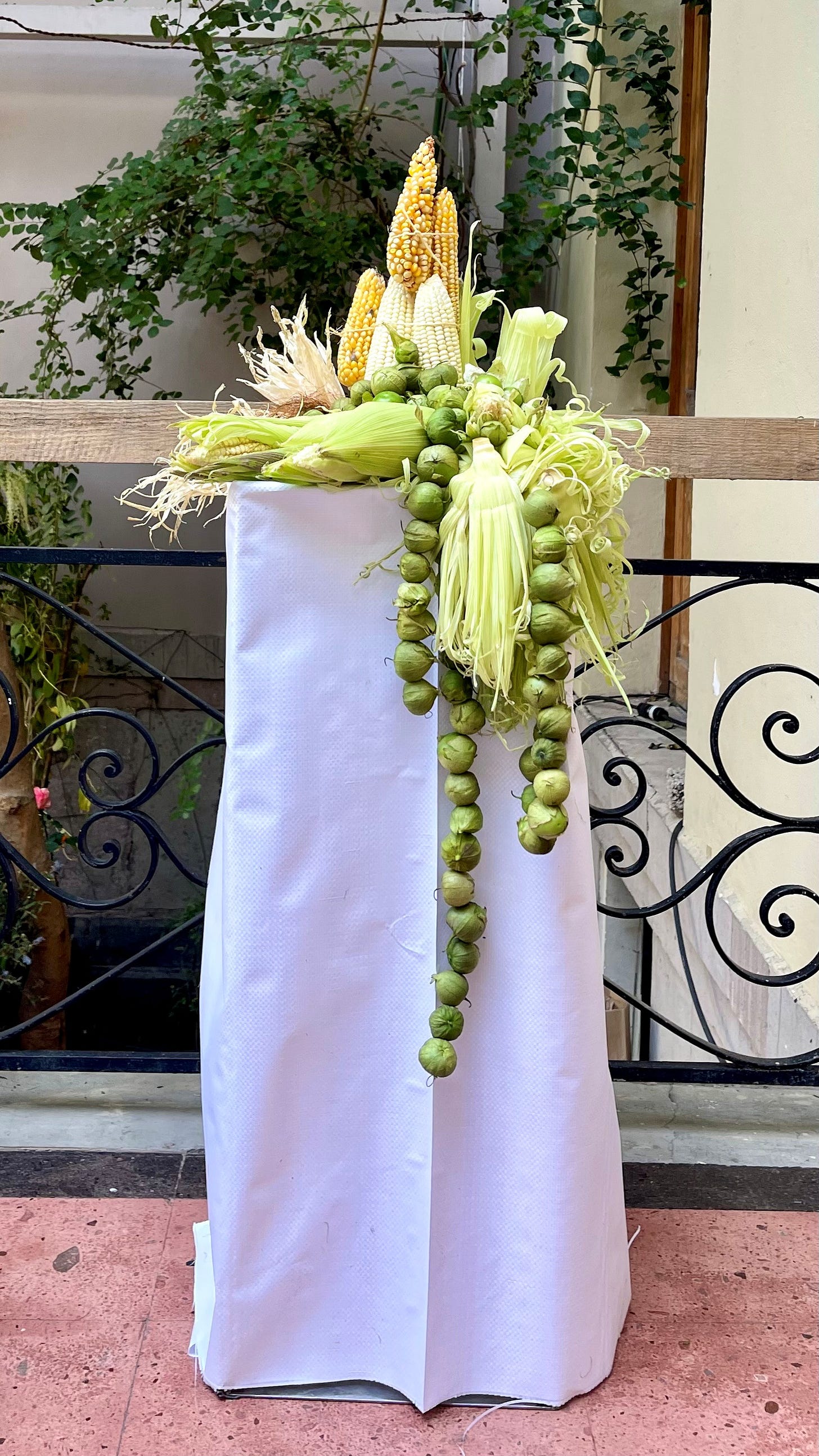
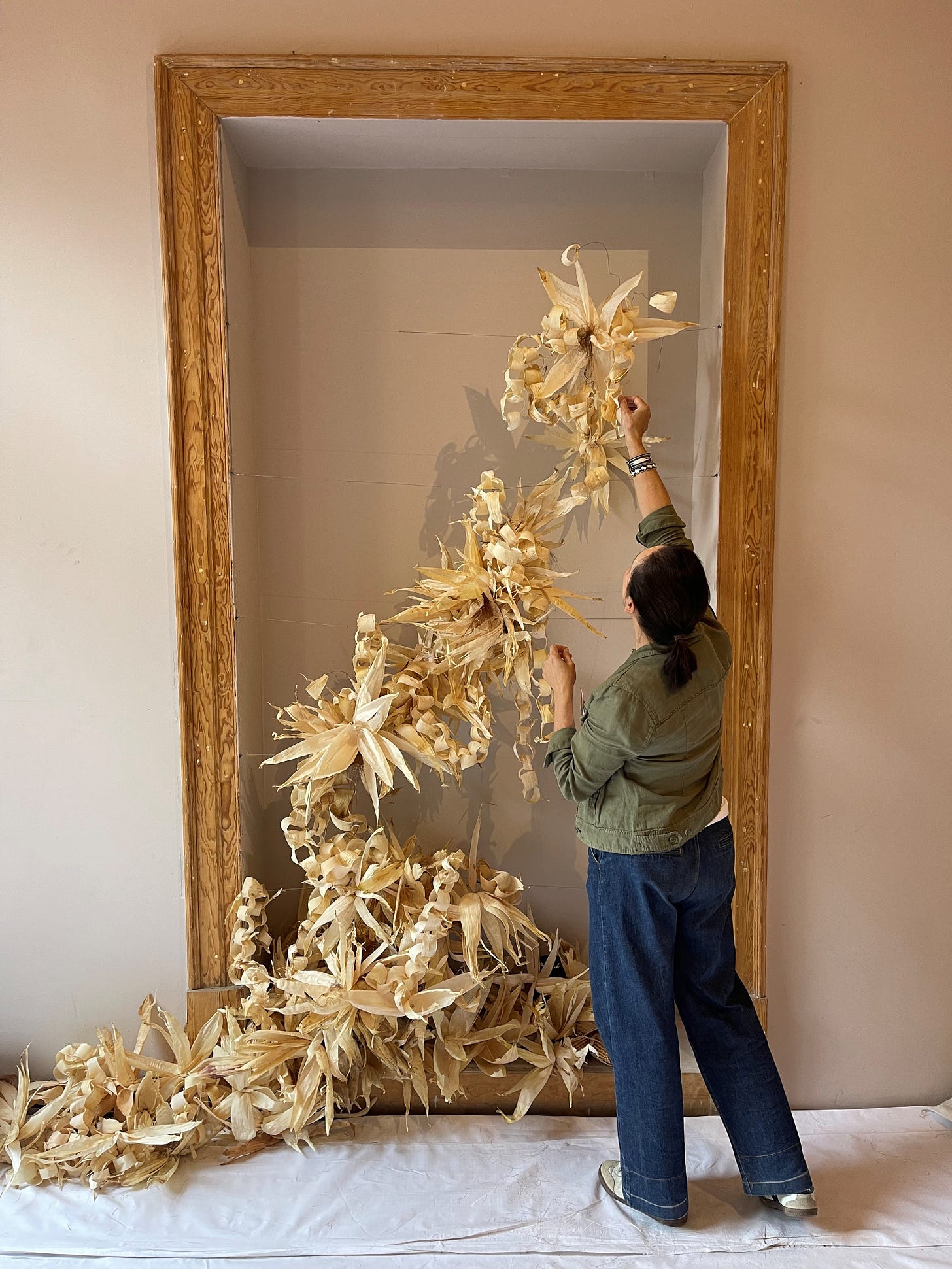


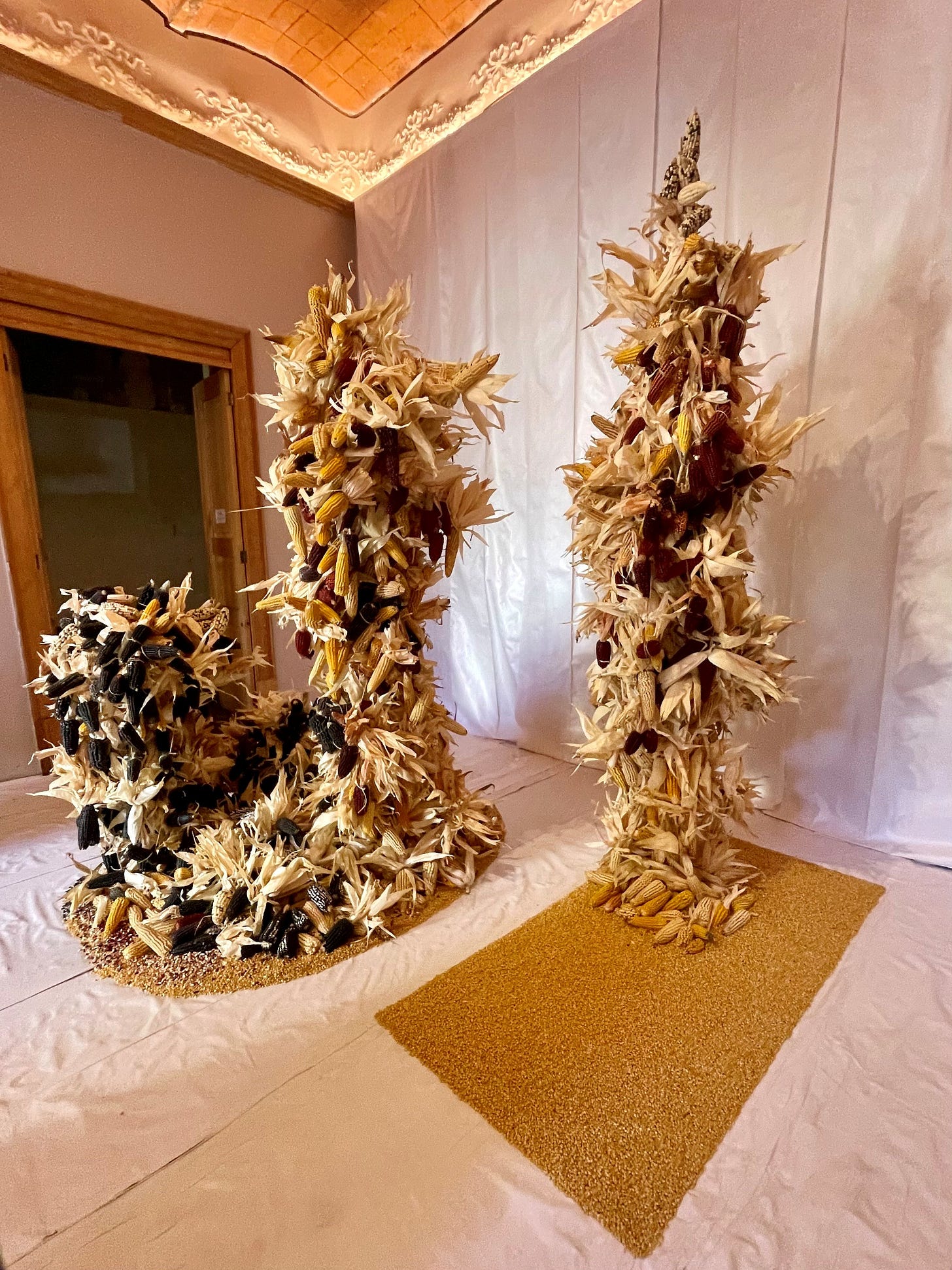



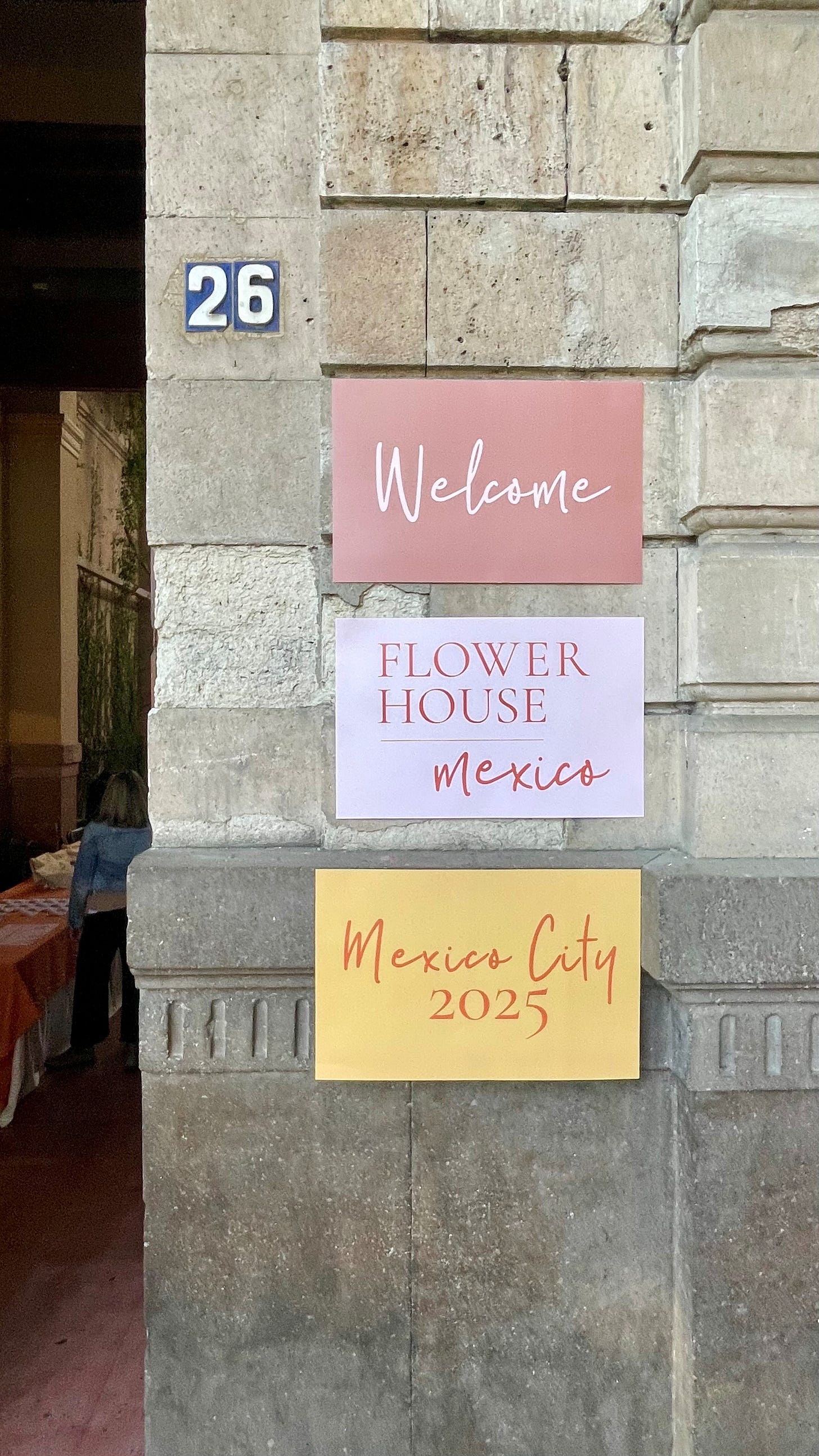

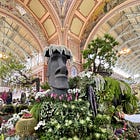


Cerina, this whole post brought me so much joy. I'm not even a flower enthusiast beyond buying the latest bundle at the supermarket, but I'm really captivated by your stories!
I love how you managed to pull together so many aspects if this event, from the flowers to the culture and the meaning of different elements related to their culture. And those photos!!!! THIS is the type of travel writing that makes travel so worthwhile. Exploring culture and beauty and combining it with your obvious passion for sharing it! ❤️❤️
This takes me right back to my travel writing days and why I loved it so much.